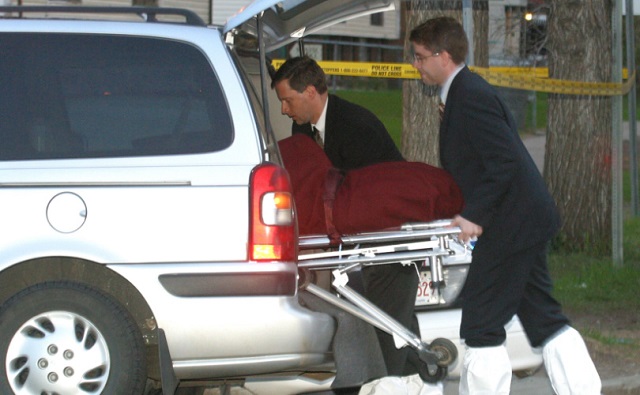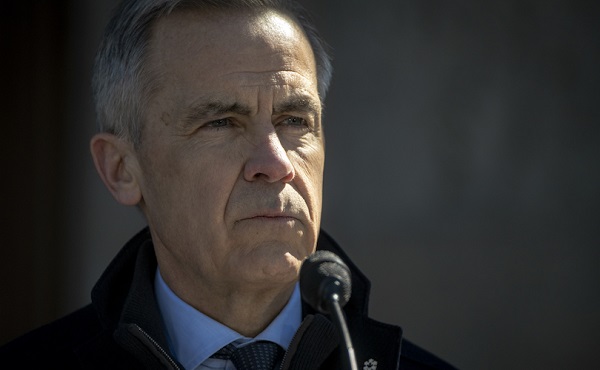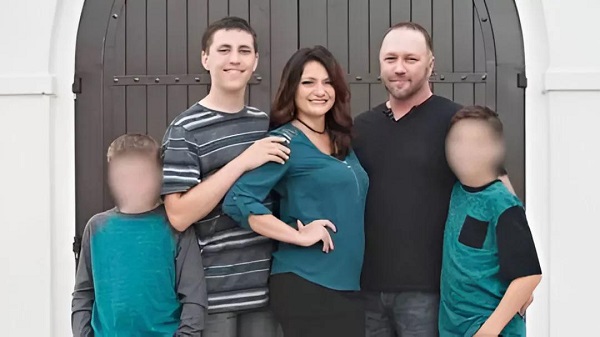Crime
Canada’s justice system struggling to fight crime amid highest murder rate in 30 years: report

From LifeSiteNews
Canada’s murder rate has increased every year from 2018 to 2022, including by 8% from 2021 to 2022, and the police-reported rate for sexual assault is at its highest level since 1995, research indicates.
A well-known Ottawa think tank warned in a recent report on crime that Canada’s justice system is unable to keep up with out-of-control crime that has risen sharply in the last few decades to the point where the national murder rate at its highest in 30 years.
According to the Macdonald-Laurier Institute’s “Report on the Criminal Justice System” released last month, Canada’s violent crime severity is at its highest level since 2007.
“Canada’s criminal justice system is clearly performing worse than it was six years ago,” the report concluded. “There remains a need for ongoing independent monitoring and performance measurement of the criminal justice system in Canada.”
In 2021, the violent crime rate increased by 6%. In 2022, the rate went up another 5%.
According to researchers, Canada’s murder rate has increased “every year” from 2018 to 2022, “including by 8% from 2021 to 2022.”
“The current homicide rate is the highest it has been in 30 years, and the police-reported rate for sexual assault is at its highest level since 1995,” researchers described.
The Institute’s report card on crime in Canada goes through each province and territory, noting that every level of government “bears a portion of the costs of criminality and each level of government therefore has an interest in its suppression.”
Since 2017, when the last report card was released, some provinces have done better and others have gotten worse. For example, Alberta’s overall positive ranking has gone up (less crime) and Ontario’s has gone down (more crime). The provinces with the most violent crime in terms of rates per population were Saskatchewan and Manitoba.
The report found that violent crime in the last five years went up overall, with the “proportion of “Canadians who express confidence in the fairness of the criminal justice system is troublingly low.”
“In 2022, only 62% of Canadians expressed confidence in the police, with only 46% expressing confidence in the justice system more broadly,” the report states.
The report also noted that confidence in “police and the justice system are worryingly low.”
“And no wonder: The combination of plunging clearance rates and an increasing number of cases stayed or gives the perception of a justice system that has given up on its core responsibilities,” according to the report, which also noted that one of the biggest issues “with fairness in Canada’s criminal justice system is the overrepresentation of Indigenous peoples in incarceration.”
“Since 1995, the Criminal Code of Canada has required courts to consider all available sanctions other than imprisonment, especially when it comes to Indigenous offenders.”
It should be noted that Canada’s Supreme Court said in 2012 that lower courts must “must take judicial notice” of the history of “colonialism, displacement, and residential schools” when sentencing Indigenous people.
However, the reality is that Indigenous people jailed for committing crimes is extremely high proportionally in western Canada and Ontario.
When it comes to the overall justice system in Canada, it scored low in terms of efficiency.
“The percentage of cases stayed or withdrawn increased in every single province and territory since 2017, as has the median criminal case length,” the report noted.
Also, crimes have been solved at a lower rate in 2023 compared with previous years, as more cases were stayed or withdrawn.
“Our criminal justice system has unquestionably become less efficient over the last five years despite the introduction of measures designed to enhance the expedient dispensation of justice,” the report states.
“For the most part, the story is not a positive one. On all five of the broad criminal justice objectives, the system is not performing as most would hope, and the situation appears to be deteriorating,” the report concluded.
Crime on the rise in Canada under Trudeau
In 2019, Prime Minister Justin Trudeau’s government passed Bill C-75, which in effect created a “catch and release bail system,” according to pundits and the opposition Conservative Party.
As a result, Canada has seen in recent years a sharp increase in auto thefts from organized crime groups, who have taken advantage of weak sentencing for those caught committing theft.
Conservative Party leader Pierre Poilievre recently blasted Trudeau for the rise in auto theft, blaming his soft stance on criminals.
“After eight years of Justin Trudeau, car thefts are up 300% in Toronto and 100% in Ottawa and Montreal. Nationally, car thefts are up by more than a third since his Liberal government took office,” Poilievre said.
Last week, Poilievre promised that a Conservative government would “go after the real criminals by restoring jail not bail for repeat violent offenders and career car thieves.”
“It’s not the courts that have turned loose criminals and allowed this crime wave, it’s Justin Trudeau. It was not the courts that passed C-75, the catch and release bail system, it was Justin Trudeau. It was not the courts that brought in house arrest for repeat car thieves in C-5, it was Justin Trudeau,” Poilievre said.
Last week, LifeSiteNews reported that Statistics Canada data shows most violent gun crimes in the country last year were not committed at the hands of legal gun owners but by those who obtained the weapons illegally. This comes despite the federal government cracking down on legal gun owners.
Crime against Christian churches has risen sharply in the past two years, with approximately 100 churches to date having been set on fire or vandalized, with almost no arrests made. That fact has prompted Poilievre to call out Trudeau for being silent on the church burnings.
Crime
Canadian teacher showed Charlie Kirk assassination video to young students, said he deserved to die

From LifeSiteNews
A Toronto teacher was suspended after reportedly forcing students to watch the assassination video while lecturing them about ‘anti-fascism, anti-trans, and how Charlie Kirk deserved this to occur.’
A Canadian teacher from the Toronto area has been suspended after showing the assassination video of Charlie Kirk to children aged 10 to 11 in his class, allegedly telling students Kirk deserved to die.
The teacher, from the Corvette Junior Public School in Toronto, Ontario, has been suspended and is under investigation by officials at the Toronto District School Board.
According to a Toronto Sun report, a source close to the situation said that several students from the teacher’s class “went home and complained to their parents, traumatized at witnessing the on-camera death, which they were forced to witness numerous times over.”
The source added that “parents subsequently reached out to school administrators, who will be putting him on leave at the start of the school day, September 12th, 2025.”
According to the source, while the teacher was playing Kirk’s assassination video, “repeatedly, he gave a speech to his students regarding anti-fascism, anti-trans, and how Charlie Kirk deserved this to occur.”
This past Friday, school officials sent parents a letter about the incident, calling the teacher’s alleged actions “extremely troubling and completely disturbing.”
“During class, students were said to have been shown a portion of a violent video in response to questions being asked about a recent tragic event in the United States,” reads the letter, which was signed by Corvette Junior Public School Principal Jennifer Koptie.
The letter confirmed that the video was allegedly shown to kids in grades 5 and 6 by a staff member at the school, who was supervising a French immersion class, but was not the student’s regular teacher.
“While an investigation must still be conducted to learn all of the details, the report of this incident is extremely troubling and completely unacceptable,” the letter continued.
Koptie wrote that the teacher has been “relieved of all teaching responsibilities pending the outcome of the investigation and will not be at the school.”
As reported by LifeSiteNews, Kirk, who was the CEO of Turning Point USA (TPUSA), was shot in the neck during an event on the campus of Utah Valley University last Wednesday and later died.
Law enforcement has Kirk’s alleged shooter in custody, as reported by LifeSiteNews.
As reported by LifeSiteNews, the roommate and alleged “partner” of Charlie Kirk’s assassin suspect has been confirmed to be a man who identifies as transgender.
Canada’s Conservative Party leader, Pierre Poilievre, last week, gave a touching tribute to Kirk, saying he was “mercilessly assassinated” for simply expressing his “contrary views.”
Canadian Prime Minister Mark Carney, after a long delay last Thursday, broke his silence on the assassination of Kirk, saying he was “appalled” by his murder while calling for “prayers” for his family.
Crime
Older man arrested at Kirk shooting admits to protecting real gunman

Quick Hit:
Chaos followed the assassination of Turning Point USA founder Charlie Kirk when police first arrested a 71-year-old man who confessed he was only trying to distract them from the real shooter.
Key Details:
- George Zinn, 71, was arrested after yelling, “I shot him, now shoot me!” but later admitted he was trying to mislead police.
- The real suspect, 22-year-old Tyler Robinson, was arrested Thursday night and identified publicly Friday morning.
- Zinn was charged with obstruction of justice, a second-degree felony, while Robinson faces charges as the alleged assassin.
Diving Deeper:
Charlie Kirk, one of the most prominent young leaders in the conservative movement, was assassinated in a brazen political attack that shocked supporters nationwide. Instead of immediately capturing the real suspect, police initially detained George Zinn, a man with a long history of causing disruptions at political events and protests.
Video of Zinn being handcuffed quickly spread, leading many to believe the threat had been neutralized. But Zinn’s arrest was a diversion — one that he admitted to orchestrating in order to shield the real shooter. He told police he wanted to “draw attention from the real shooter,” an action that delayed accountability and nearly allowed a dangerous criminal to evade justice longer.
Zinn’s background only adds to the picture. As the Salt Lake Tribune noted, he has a history of disrupting events — from political speeches to cultural gatherings like the Sundance Film Festival. His disruptive activism fits a pattern of left-wing agitators who thrive on chaos, and in this case, he played a role in protecting an assassin.
-

 Alberta1 day ago
Alberta1 day agoAlberta Education negotiations update: Minister Horner
-

 Alberta1 day ago
Alberta1 day agoBreak the Fences, Keep the Frontier
-

 Business2 days ago
Business2 days agoCarney Admits Deficit Will Top $61.9 Billion, Unveils New Housing Bureaucracy
-

 Opinion1 day ago
Opinion1 day agoRFK Jr. Reveals Unforgettable Details About Charlie Kirk in Emotional Tribute
-

 Business2 days ago
Business2 days agoCarney’s Ethics Test: Opposition MP’s To Challenge Prime Minister’s Financial Ties to China
-

 Business1 day ago
Business1 day agoCarney government’s housing GST rebate doesn’t go far enough
-

 Media1 day ago
Media1 day agoCancel culture wins ultimate victory as murder of Charlie Kirk ghoulishly celebrated by radical Left, media included
-

 Business22 hours ago
Business22 hours agoGlobal elites insisting on digital currency to phase out cash



